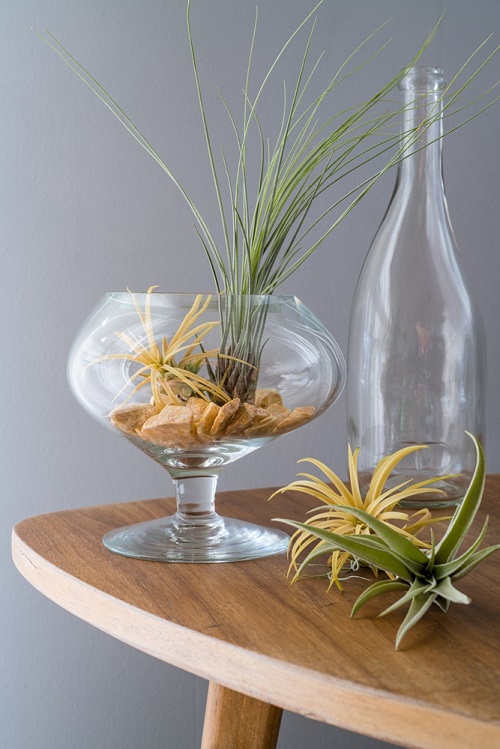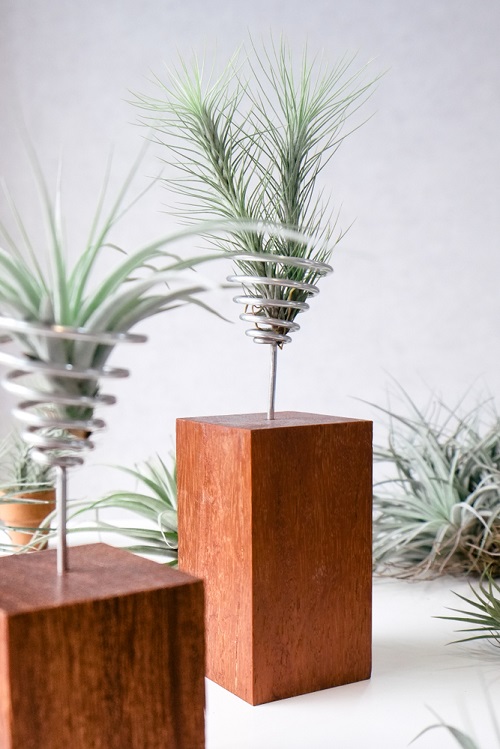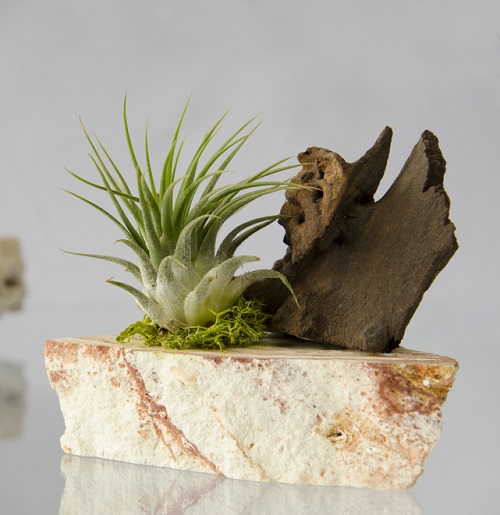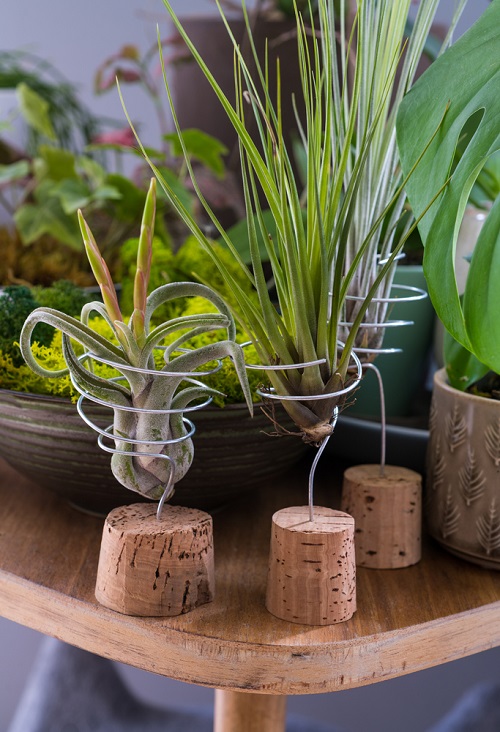Where Do Air Plants Come From? This article has all the answers to your questions and a few facts about Tillandsia.
There are over 600 types of air plants, and their survival strategies have astounded many biologists. Plant sciences have verified that Tillandsia mostly grows in arid and mountainous areas with suitable climatic conditions. The article will walk you through a journey of facts that will help you understand Where Do Air Plants Come From, their unique characteristics, and how they are adapted to their functions for survival.
Origin of Air Plants

These fascinating plants have their origin primarily in America, where they are native to a range of environments, from deserts to rainforests. Here is an elaboration on the origin and characteristics of air plants:
1. Native Range
Air plants are primarily found in the southern United States, Mexico, Central America, and South America. They have adapted to a wide range of climates and ecosystems within these regions.
2. Epiphytic Nature
One of the defining characteristics of Tillandsia is its epiphytic nature. They often grow on trees, rocks, and other surfaces, using their specialized trichomes (tiny hair-like structures) to attach themselves and extract moisture and nutrients from the surrounding air and rainwater.
3. Diverse Species
There are over 600 recognized species of Tillandsia, and they vary in size, shape, and color. Some are quite small, while others can grow several feet in length. Each species has adapted to its specific environment, leading to a wide diversity of forms.
4. Natural Habitats
Air plants can be found in a variety of natural habitats, including tropical rainforests, cloud forests, arid deserts, and even high-elevation mountain regions. Their adaptability to different environments is a testament to their resilience.
5. Growth and Reproduction
Air plants reproduce primarily through the production of offsets, also known as pups, which grow at the base of the parent plant. Once the pups are large enough, they can be separated and grown as independent plants. Tillandsia also produces colorful flowers that attract pollinators like hummingbirds and insects.
6. Conservation Concerns
Some species of air plants are threatened by habitat destruction and overcollection for the ornamental plant trade. Conservation efforts are in place to protect these unique plants in their natural habitats.
Characteristics of Air Plants

1. No Soil
Tillandsia are unique because they don’t grow in soil. Instead, they use their tiny roots to cling onto things like tree branches or rocks. This ability to live without soil makes them really flexible and interesting for decoration.
2. Easy Care
Taking care of Tillandsia is a breeze. You don’t have to worry about complicated routines. Just give them some water and light, and they’ll be happy. They’re perfect for people who want plants but aren’t great at gardening.
3. Air Purifiers
Air plants are like natural air cleaners. They can absorb harmful stuff in the air, like chemicals and dust. So, having them around can help make the air in your home cleaner and healthier.
4. Minimal Water
Tillandsia don’t get thirsty very often. They only need a quick soak in water every couple of weeks. It’s like giving them a little drink to keep them going, and they’re good to go!
5. Appreciate Sunlight
Just like how we enjoy sunlight, air plants do too. But they like it to be not too bright, like indirect sunlight. So, put them near a window where they can enjoy the sunshine without getting too hot.
Where Do Air Plants Come From?

Air plants, scientifically known as Tillandsia, originate primarily from America and are native to a wide range of countries within this region. Here’s a more detailed explanation of where air plants come from:
- North America: Some species of air plants can be found in the southern United States, particularly in states like Florida, Texas, and Louisiana. These regions provide a habitat for various Tillandsia species, such as Spanish moss (Tillandsia usneoides), often hanging from trees in humid, subtropical climates.
- Central America: Many air plant species are native to Central American countries, including Mexico, Guatemala, Honduras, Costa Rica, and Panama. They thrive in a variety of environments, from tropical rainforests to arid regions, and can be found growing on trees, rocks, and even telephone wires.
- South America: South America is a significant center of diversity for Tillandsia species. Countries like Brazil, Colombia, Ecuador, Peru, and Venezuela are home to a wide variety of air plants. In these regions, air plants are adapted to diverse ecosystems, ranging from dense rainforests to high-elevation mountain habitats.
- Other Regions: While the Americas are the primary center of distribution for air plants, some species can also be found in other parts of the world, including parts of the Caribbean, the Galapagos Islands, and some regions in Africa.
Explore the Best Air Plant Terrarium Ideas here
Surprising Facts About Air Plants
- Tillandsia doesn’t grow in soil like most plants. Instead, they anchor themselves to trees, rocks, and telephone wires. They get their nutrients from the air.
- Despite their unique lifestyle, air plants can have a long lifespan. Some can survive for several decades properly, making them long-term companions for plant enthusiasts.
- When Tillandsia bloom, they often change color. For example, a green air plant might turn red, pink, or purple shades during its flowering period. This transformation is a stunning sight to behold.
- Tillandsia attach themselves to surfaces but don’t harm the host. They’re epiphytes, which means they use other structures for support without taking nutrients from them.
- Some air plant species, like Tillandsia usneoides (Spanish moss), can float in the air. They dangle from trees, creating beautiful, hanging curtains in the forests of the southeastern United States.
- You can get really creative with air plant displays. They can thrive on driftwood, seashells, or even old pottery pieces. Their adaptability makes them perfect for unique and artistic arrangements.
- Tillandsias are adaptable to arid environments. They can endure periods of drought by closing their trichomes (tiny leaf structures) to conserve moisture and rehydrate when it rains.
- If you don’t have much natural sunlight, don’t worry. Tillandsia can grow happily under artificial light, making them a versatile choice for indoor spaces.
- If you accidentally forget to water your Tillandsia and it dries out, there’s hope. You can revive it by soaking it in water for a few hours to rehydrate and bring it back to life.
Read Everything About Air Plant Diseases here
FAQs- Where Do Air Plants Come From
1. What are air plants, and where do they originate?
Tillandsia are a unique type of plant that belongs to the Bromeliaceae family. They are famous for their ability to grow without soil. Air plants primarily originate from the Americas, including regions of North and South America, Central America, and the southern United States.
2. Are there different species of Tillandsia, and do they have varying origins?
Yes, there are over 600 species of air plants, and they can have different native ranges. Some species belong to the specific regions of America, while others have a broader distribution. Each species may have slightly different care requirements.
3. Can I find Tillandsia in my local nursery or garden center?
Yes, many nurseries and garden centers carry Tillandsia, especially those specializing in succulents and unique houseplants. Additionally, you can purchase air plants online from various suppliers and retailers.

